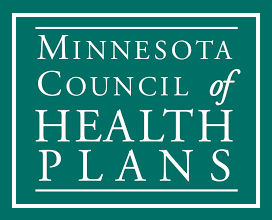Ensuring Affordability in Minnesota’s Individual Market: Don’t Overlook 2026
With both state and federal subsidies for the individual market set to expire at the end of next year, a recent study projected that over 90,000 Minnesotans could become uninsured in 2026
Should Minnesota launch a “public option”? Well, maybe, according to a recent editorial in the Star Tribune. As the editorial states, “implementing a public option is a dauntingly complex undertaking” and there are simply a lot of unanswered questions remaining as the 2024 Minnesota Legislature convenes to give the issue further consideration. Some of these questions have to do with the potential timeline for standing up this type of program. At its earliest, a public option would begin in 2027 and there are significant challenges facing the state’s coverage affordability before it could ever get off the ground. The Minnesota Council of Health Plans and our nonprofit members remain focused on supporting policymakers with accurate information and helping find solutions to challenging issues. Accordingly, it is important to make sure that several major issues facing Minnesotans are not overlooked in the decision-making process.
One of those major looming issues facing our nation as a whole is the December 31, 2025 expiration of enhanced tax credits under the American Rescue Plan Act (“ARPA”). Just how big are these tax credit expansions? MNsure estimated these ARPA tax credits saved Minnesota families an average of $684 per year in 2022. Savings do vary widely based on a number of factors, including income, age and dependents, with MNsure scenarios putting the range from as low as $100 to well over $1,000 — one scenario models the impact on a Mankato family of two with a $72,000 income as losing eligibility on a $1,192 monthly credit. It is estimated that 80,000 Minnesotans will be impacted overall from this change.
If that is not challenging enough, Minnesota is currently planning a simultaneous sunset of the successful Minnesota Premium Security Plan. The reinsurance style program was created to lower premiums for people buying insurance on their own by paying a portion of high-cost medical bills, a cost that otherwise must be built into premiums. The program offsets high medical costs for thousands of Minnesotans every year, including people living with cancer, asthma, arthritis, and heart disorders, and autoimmune conditions. By taking those costs out of the equation, health plans lowered premiums -20% on average. A program evaluation study published by the Centers for Medicare & Medicaid Services (“CMS”) credited the state’s reinsurance program as having an impact as high as -36%, enabling more than 88,000 Minnesotans to have coverage who otherwise would have been uninsured.
The reinsurance program is authorized to run through 2027 as part of a five-year federal waiver period and, until last year, had sufficient funding allocated for it to run through at least 2026. However, the 2023 legislature voted to transfer money out of the account that funds the Premium Security Plan in order to fund other priorities, effectively ending the program due to insufficient funding after 2025.
The Council of Health Plans commissioned RAND Health Care, a highly respected research organization, to study these looming 2026 issues to inform policymakers on the impact of these major programs simultaneous sunsetting, along with potential ways to mitigate that impact. RAND found that:
- The combination of reinsurance and enhanced ACA subsidies simultaneously expiring will result in premium increases upwards of 50% for 2026.
- Absent action, as many as ninety-three thousand Minnesotans will find coverage unaffordable and become uninsured in 2026.
- State premium and out-of-pocket subsidies would be potential solutions to these issues to help keep coverage affordable and reduce the number of Minnesotans that will become uninsured.
- Previous studies demonstrate that extending reinsurance is also a viable option for supporting stable premiums and affordability.
So, a public option in 2027? Well, maybe. But let’s not overlook the serious affordability issues facing the state in 2026 in doing so.

